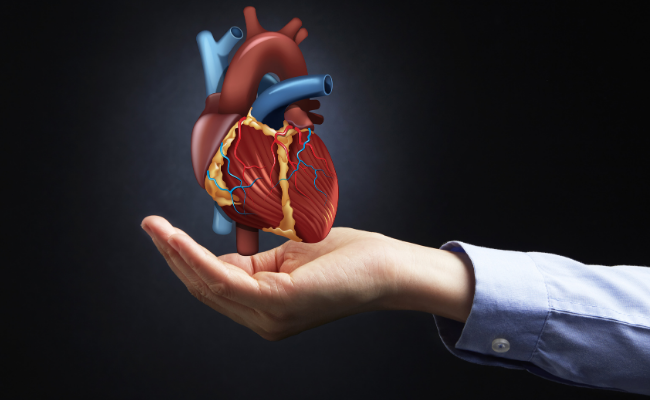How to Treat Long Qt Syndrome?
- January 19, 2024
- No Comments
What is Long QT Syndrome (LQTS)?
Long QT Syndrome (LQTS) is a heart rhythm disorder marked by a delayed reset of the heart's electrical system between beats, reflected in the QT interval on an electrocardiogram (ECG). Dysfunction in ion channels can cause this delay, leading to a prolonged QT interval and an increased risk of life-threatening ventricular tachycardia, known as Torsades de Pointes. This disruption in heart electrical activity may result in arrhythmias, fainting, seizures, or sudden cardiac arrest. Timely detection and management are crucial for minimizing the risk of severe events and promoting overall cardiac health.
Why Does Long QT Syndrome Occur?
Long QT Syndrome is primarily a genetic disorder, with mutations in certain genes affecting the ion channels responsible for regulating the heart's electrical activity. These mutations disrupt the normal flow of ions, leading to an imbalance and the characteristic prolonged QT interval. In some cases, Long QT Syndrome may also be acquired through certain medications, electrolyte imbalances, or other medical conditions.
How Does Long QT Syndrome Manifest?
The manifestations of Long QT Syndrome can vary, ranging from no symptoms to life-threatening arrhythmias. Common symptoms include fainting (syncope), seizures, and palpitations. Triggers for arrhythmias may include exercise, emotional stress, or loud noises. Unfortunately, the first sign of Long QT Syndrome for some individuals may be sudden cardiac arrest, emphasizing the importance of early detection and intervention.
Treatment Solutions for Long QT Syndrome:
Managing Long QT Syndrome involves a combination of lifestyle modifications, medications, and, in some cases, medical devices. The goal is to reduce the risk of life-threatening arrhythmias and enhance the overall quality of life for individuals with Long QT Syndrome.
- Lifestyle Modifications: Certain lifestyle adjustments can help mitigate the risk of arrhythmias in individuals with Long QT Syndrome. This may include avoiding strenuous exercise and competitive sports, especially those with a high risk of sudden bursts of activity. Emotional stress management and maintaining a heart-healthy diet are also essential components of lifestyle modifications.
- Beta-Blockers: Beta-blockers are commonly prescribed medications for individuals with Long QT Syndrome. These medications, such as propranolol or nadolol, help regulate the heart rate and reduce the risk of arrhythmias. Beta-blockers are often the first-line treatment and are particularly effective in preventing arrhythmias triggered by physical activity or stress.
- Mexiletine: In some cases, mexiletine, an antiarrhythmic medication, may be prescribed in addition to or instead of beta-blockers. Mexiletine can help further stabilize the heart's electrical activity and reduce the risk of arrhythmias. However, its use is typically reserved for cases where beta-blockers may be insufficient or not well-tolerated.
- Implantable Cardioverter-Defibrillator (ICD): For individuals at high risk of life-threatening arrhythmias, especially those with a history of cardiac arrest or severe symptoms despite medication, an implantable cardioverter-defibrillator (ICD) may be recommended. An ICD is a small device implanted under the skin that monitors the heart's rhythm and delivers a shock to restore normal rhythm if a dangerous arrhythmia occurs.
Benefits of Treatment for Long QT Syndrome:
Implementing appropriate treatment strategies for Long QT Syndrome can offer numerous benefits, reducing the risk of life-threatening events and improving the overall quality of life for affected individuals.
- Risk Reduction for Life-Threatening Arrhythmias: The primary benefit of treatment is the reduction of the risk of life-threatening arrhythmias. Beta-blockers and other medications, along with lifestyle modifications, contribute to stabilizing the heart's electrical activity and preventing dangerous rhythm disturbances.
- Improved Quality of Life: Treatment for Long QT Syndrome enables individuals to lead a more normal and fulfilling life. By managing symptoms and reducing the risk of arrhythmias, individuals can engage in daily activities with greater confidence and a reduced fear of sudden cardiac events.
- Enhanced Safety: The use of an implantable cardioverter-defibrillator (ICD) provides an added layer of safety for individuals at high risk of severe arrhythmias. In the event of a life-threatening rhythm disturbance, the ICD delivers a shock to restore a normal heartbeat, potentially saving the individual's life.
- Peace of Mind for Individuals and Families: Appropriate treatment not only benefits the individual with Long QT Syndrome but also provides peace of mind for their families. Knowing that proactive measures are in place to manage the condition and reduce the risk of sudden cardiac events can alleviate anxiety and stress for both the affected individual and their loved ones.










.jpg)
Comments (0)
No comments yet